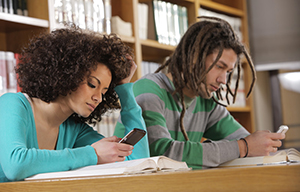NT 4.6.1 Media

According to Dictionary.com, media is the means of communication, such as radio and television, newspapers, and magazines that reach or influence people widely. Add to that computers and the internet and it is easy to see that our involvement with media and its impact on us is immense. The Kaiser Family Foundation found that kids ages 8 to 18 spend a whopping 7.5 hours a day online (Lewin, 2010). Taking into account that kids are frequently multi-tasking, the actual media content children are exposed to daily explodes to the equivalent of 11 hours per day!
National media portrayal of individuals performing the job duties of a nontraditional career in a positive light increases participation of the nontraditional gender in the careers. Conversely, the constant and often gender-stereotypical exposure of electronic media solidifies gender stereotyping. With 11 hours a day of media input, it is imperative that educators take all opportunities to teach kids to view all media through a critical thinking lens. As Share and Thoman write in Teaching Democracy: A Media Literacy Approach, “Students who learn to think critically about media messages, who value diverse points of view, who challenge the popular interpretation by contributing their own understanding and insights will have the skills needed to ensure the continuation of democracy—and literacy—in the 21st century” (Consortium for Media Literacy, 2013, p. 12).
To increase media literacy, it is important that we identify and highlight positive role models in the media. Additionally, we should discuss TV, movies, advertisements and music with our students to identify stereotypes contained within them as well as media images that portray equity and inclusion. Raising students’ media literacy and teaching critical thinking about media is an effective way to help students identify their own implicit biases as well as the bias that stems from media representation. A great source for additional information including lesson plans and educator guides is the Center for Media Literacy (CML).
Pause & Reflect
- What media strategies are you and your school using to recruit and retain nontraditional and STEM students?
- Are they working?
- How do you know?
- If not, how could they be modified to be more impactful?
- What media do you have or should you have in your classroom and office that supports nontraditional and STEM students?

